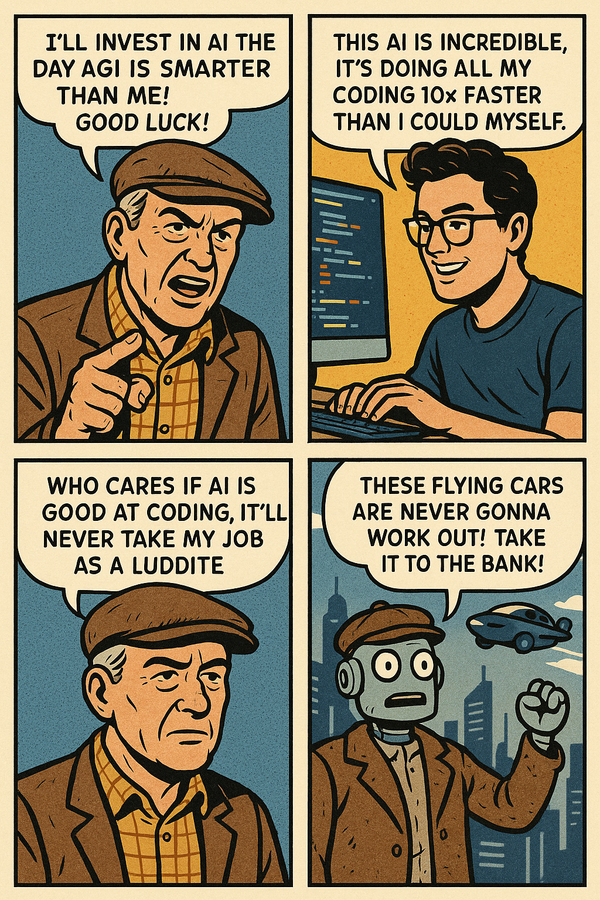All you have to do is prepare for bull and bear markets, bubbles, crashes and other realities
Has someone taken your faith?
It’s real, the pain you feel
You trust, you must confess
Is someone getting the best
The best, the best, the best of you? – Foo Fighters
If you are reading this, you probably have some savings and money that you are trying to figure out how best to create potential upside while minimizing downside risks. In some sense, nothing has changed for investors from the beginning of capitalism – if you buy equity in a company that in turn creates lots of earnings you will benefit from those increased earnings over time as they eventually get paid out in dividends, buybacks, and capital gains as the stock goes up and other investors want to participate in the benefits of those growing earnings.
The most obvious and best example of this in modern-day times, is my own Revolution Investing experience in buying Apple back at $7 a share in 2003. Back then the company was borderline profitable but had no debt and $8 per share in net cash on the balance sheet. As an hedge fund manager at the time, looking to put my partners’ and my money to work in the stock market, I liked the risk/reward of buying a long-established tech company who had just a couple years ago brought back their visionary and mercurial founder (Steve Jobs) while the market was valuing the potential future earnings growth at a -$1 per share — meaning that the market was betting that Steve and his team would destroy shareholder value rather than create new earnings growth in years ahead.
In the last eleven years, Apple, mostly with Steve Jobs at the helm, created iPods, iTunes, iPhones, iPads, iOS, Apple TV, iMacs, MacAir and quite a few other products that created earnings and high earnings growth and therefore shareholder value. Apple’s revenues and earnings have grown more than 10-fold since 2003 and because they have generated and retained so much earnings, the company now has $150 per share in net cash on the balance sheet. And they will pay out more than $12 per share in dividend cash payments to shareholders like me this year. Which literally means that I’m getting nearly 200% more in dividends now than what I paid for the entire stock back ten years ago.
Clearly, if we can find just one or two of these kinds of investments in our lifetime, we’ll be way ahead of the markets and most investors and traders over time. The best time to get into a long-term investment is often when the stock you’re looking at is being completely trashed along with a broader market crash. I’d bought Apple in 2003, when the Nasdaq was down 70% from its year 2000 highs. I know people who snuck in and bought Apple when it was down in a straight line more than 50% from its all-time highs and below $100 a share back in 2008. They too have seen the company add hundreds of billions of dollars in shareholder value and tens of billions of dollars of cash onto the balance sheet since they bought in.
Bringing this back to the present day then, I do think we’ll look back in another five or ten years and see that Apple has continually raised its dividend as its earnings have continued to compound grow and that today’s shareholders will likely see more hundreds of billions of dollars in shareholder value created.
Remember all of this and how important it is to find the right stocks that will grow for you, despite all my political ranting and economic analysis about how the Federal Reserve and the Republican/Democrat Regime and all developed nation governments and central banks around the world are creating imbalances and future market crashes by their pro-corporate earnings movement. I do think that in the next year or two or three years we will likely see another huge market crash, taking the major indices down 50% or more from whatever all-time highs they set before that next crash comes.
Using tranche buying and selling wherein you buy and sell about 1/5 or 1/3 or so of what you consider a “full position” in any particular stock can help you maximize the upside gains over time and help you build some cash on the sides when markets and stocks are up big. Then the next time the markets crash (see 2000 and 2008 for most recent examples), you’ll also have some of that cash on the sides to use to scale back into your favorite, best stocks when they get sold off in that crash.
Know your strategies and understand why those strategies create tactics in your playbook so that you can be ready for whatever the markets throw at you. Bull and bear markets, bubbles, crashes — they all exist, they cycle through our economy and you have to deal with it. So be prepared rather than surprised.




